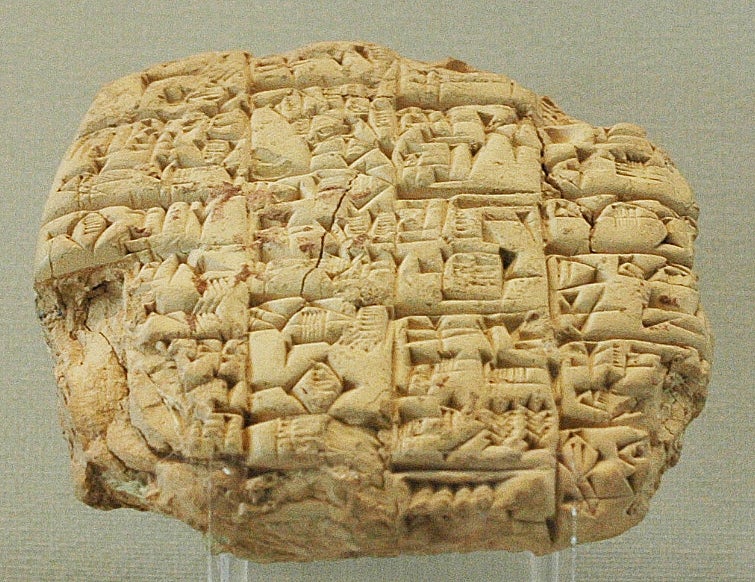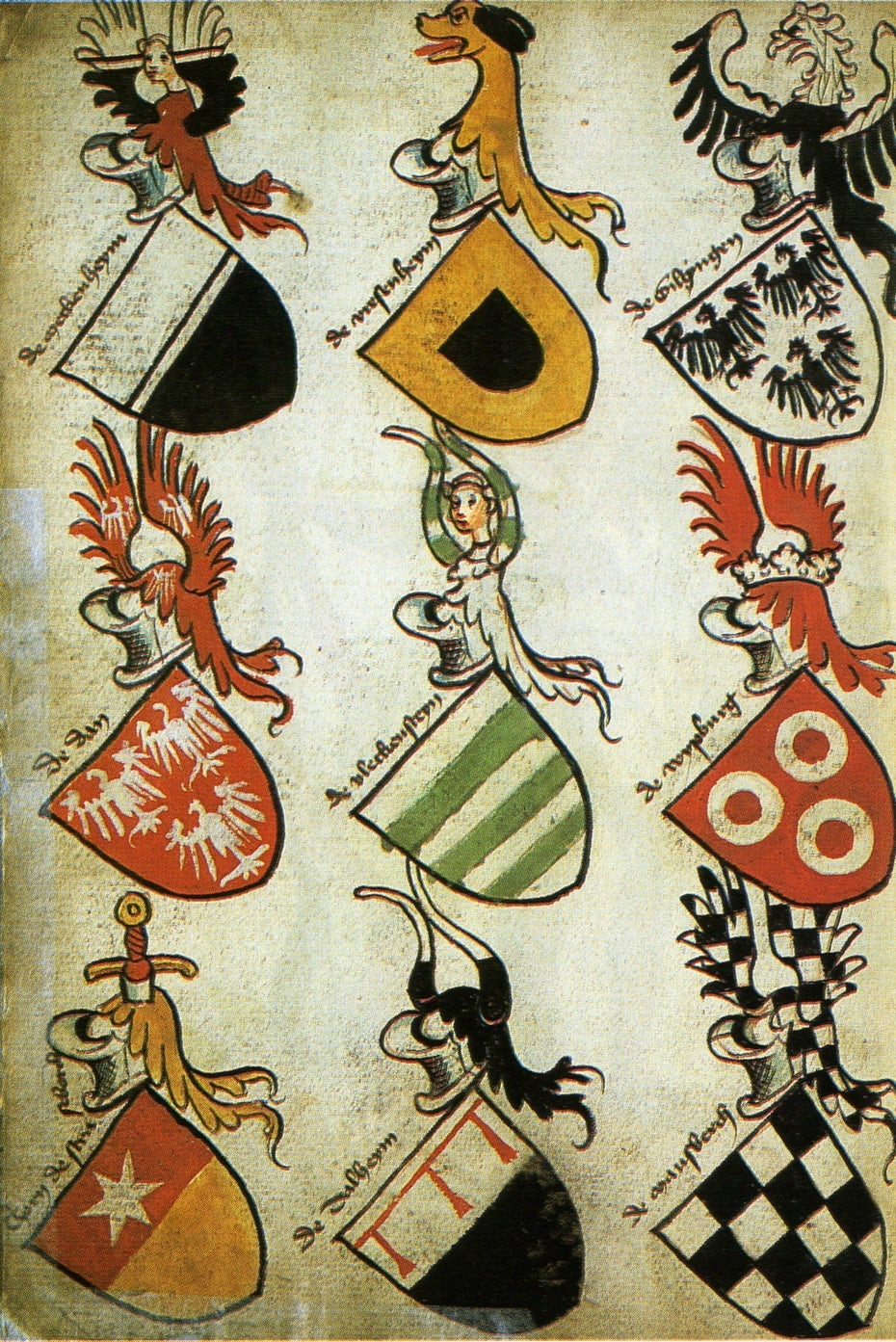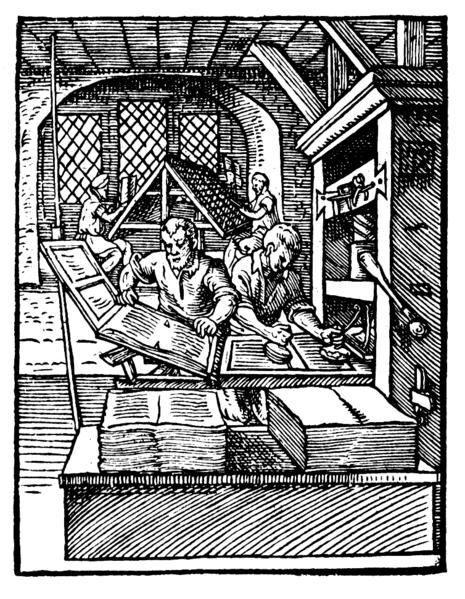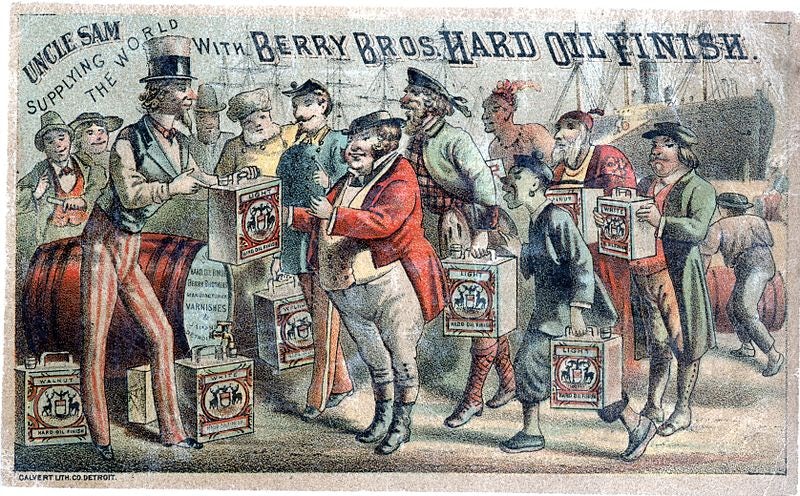The First Modern Form of Graphic Design Was the
Graphic design is so much a part of our modern world that it is hard to imagine living without it. And in some ways, we never have: visual communication is about as old as our opposable thumbs, though it's been a long journey from stone tools to digital tablets. In short, the history of graphic design is a story that spans the entirety of human existence and it has the power to inspire and inform even modern graphic designers.
For one thing, knowing where, why and how this industry came about helps designers understand their place alongside history. In more practical terms, stylistic trends are cyclical, and studying the past can inspire some innovative ideas in the present. So join us as we trace the roots of design from pre-industrial history into the industry we know today. With any luck, you might just leave your own footprint along the way!

- Before the Printing Press: Prehistory to the Renaissance
- Cave paintings
- Sumerian written language
- Chinese printing
- Medieval calligraphy
- European heraldry
- Storefronts
- The birth of graphic design: Renaissance and Industrial Era
- Gutenberg press
- First logos
- First Print Advertisements
- Chromolithography
- Graphic design in the modern era
- The Wiener Werkstätte
- Paul Rand
- A glimpse into the digital era
- The history of graphic design is ongoing
Before the printing press: Prehistory to the Renaissance
—
Graphic design proper really began after the invention of the printing press in 1440, but the roots of visual communication stretch all the way back to caveman times. In this section, we'll run down the events of early history that paved the way for graphic design centuries before the world was ready for it.
Cave paintings ~38,000 BCE
It seems like humans have always had an inherent drive towards art, evidenced by the early cave paintings dating back to prehistoric times. Subjects vary from animals to hand imprints to events like hunting, and they've been found all over the world (Australia, Spain, Indonesia, France, Argentina, just to name a few). Historians debate the fine details as to who these were meant to communicate with (whether each other or their gods), but one thing that's clear is, right from the start, humanity displayed a knack for communicating with visuals.

Sumerian written language – 3300 – 3000 BCE

As you read this article, interpreting all these tiny, abstract marks of the Latin Alphabet into words and sentences, it's easy to forget that alphabets are a man-made invention. As far as we know, the Sumerians created one of the first written languages, most likely as a means of recording trader inventories to ensure couriers didn't steal anything on deliveries.
These earliest languages were logographic—icons represented entire words instead of phonetic sounds. This suggests a natural ability of humans to use visual representation to communicate complex ideas, a cornerstone of modern graphic design. And in the last few millennia, not much has changed: designers still rely on icons like hamburger menus or magnifying glasses to represent entire words and concepts in limited space.
Advancements in Chinese printing 200 CE – 1040 CE

China holds most of the records for printing discoveries, including non-papyrus paper making, woodblock printing, and movable type—all of which occurred earlier than you might have guessed.
As far back as 200 CE, China used wood reliefs to print and stamp designs on silk clothes, and later paper. In 1040, Bi Sheng invented the world's first movable type printing press out of porcelain, more than 400 years before Gutenburg brought a similar technology to Europe.
Medieval calligraphy – 700s
In the Middle Ages, typography started to take off as humanity started expanding its aesthetic horizons into the letters and words themselves. Because texts in this period were produced and replicated by hand, a little artistry made the books more valuable and set certain scholars apart from others. In Islamic cultures, typography was doubly important because figurative art was seen as sacrilegious, meaning typography was one of only a few permissible ways of artistic expression.


European heraldry – ~1100
Technically, the world's first logo is the coat of arms, used as a symbol to represent family houses or territories. Scholars theorize the practice was popularized during the Crusades, where intermingling soldiers from different countries and houses incentivized a means to tell everyone apart, particularly on armor and battle flags.
Like logos, a house's coat of arms aimed to represent the values, characteristics and styles of the people. Later, these emblems took on more practical purposes, such as wax seals to reflect authenticity.
Storefront signage – 1389

In the 14th century, beer and ale were viable if not preferable alternatives for drinking water at a time when most water sources were polluted. King Richard II of England made a law that ale houses must have signs out front so the public could find them easier.
Not only were these the first signage that actually represented companies rather than houses, but they're also the origin of a beautiful tradition that survives to this day.
The birth of graphic design: Renaissance and Industrial Era
—
With the advent of the printing press in Europe, humanity was able to recreate text, art and design on a massive scale, and for relatively cheap. The ancestors of modern companies—also on the rise—soon took notice of how such visuals could affect shopping behaviors and increase profits, thus modern graphic design was born.

Invention of the Gutenberg press – 1439
Johannes Gutenberg brought moveable type to Europe in 1439, introducing mass communication to Western culture and forever changing civilization. With the Gutenberg press, people no longer had to rely on lengthy scholarly reproductions of books, opening up literature (and literacy) to the masses and making it affordable. The Gutenberg press paved the way for more commercial uses of design, which ushered in the era of graphic design as we know it.

First logos – late 1400s
It was the printing industry that first used logos, although they were limited to just marks on their own documents. It wasn't just a branding device, but also a means to show off your printing skill—how well your logo was printed reflected how well everything was printed.

First print advertisements – 1620s
The printing press gave way to the "coranto," the precursor to the newspaper. And in the early 1600s, these corantos featured the first printed advertisements.
(To be fair, written advertisements date back to ancient Egypt, but this is the first time we see images in mass-produced ads.)
Chromolithography – 1837

Technological advancements continued to fuel the progression of graphic design, such as the ability to print in color, or chromolithography. While used primarily for recreating paintings for home decor, chromolithography also opened new doors for advertising.

Brands were now able to use a lot of the familiar marketing tools we know today, such as characteristic color schemes and building emotional connections through slice-of-life scenes. Before, visuals were stilted by the tech of the time (see the ink blot coranto image in the previous section) and prioritized basic clarity instead of touching on complex emotions. But chromolithography enabled some degree of realism, allowing advertising to capitalize on attractive models, fashions of the day and artistic usage of colors.
Graphic design in the modern era
—
Graphic design as we know it today really started developing in the modern era, roughly the late 1800s up until the end of World War II. While the 19th century was more about technological advancements and new capabilities, the modern era was about learning how to exploit these advancements for more artistic aims. With printing now a common tech and competition fueling innovation, artists and designers were pushed to explore new styles and techniques, which quickly trickled into advertising and branding.
The Wiener Werkstätte (first graphic design agency) – 1903
With more and more companies recognizing the benefit of graphic design, it was just a matter of time before the first graphic design agency emerged. That honor belongs to Austria's Wiener Werkstätte, an organization who made contributions to design style and business alike.

Meaning simply "Vienna workshop," the Wiener Werkstätte was the first such organization of visual artists, including painters, architects, and early graphic designers. Organizationally, it set the precedent for all other collaborative agencies to follow.
Perhaps its greatest legacy was stylistic innovation, such as cubism. And as a group of professional artists working together, they held great influence over establishing design standards for upcoming generations of artists, particular those after World War I when cultural attitudes were changing worldwide. The work done at the Wiener Werkstätte set the stage for the popular Bauhaus and Art Deco styles that soon followed.
Staatliches Bauhaus founded – 1919

Furthering what the Wiener Werkstätte started, the Staatliches Bauhaus, or just simply "Bauhaus," first opened its doors in Weimar, Germany in 1919. Theirs was an ambitious goal: to create a Gesamtkunstwerk, an artistic ideal that encompasses or synthesizes existing art forms into one perfect work. The interesting thing is they actually succeeded: Bauhaus was one of the central driving forces behind the popularization of the modernist style.
The term "graphic design" appears for the first time – 1922

In his article "New Kind of Printing Calls for New Design" (printed in the Boston Evening Transcript, August 29, 1922), book designer William Addison Dwiggins first used the term "graphic design" to describe exactly what his role was in structuring and managing the visuals in book design. From day one, designers were struggling to explain to non-designers what, exactly, they did.
Paul Rand publishes Thoughts on Design – 1947
With one foot in modernism and the other in post-modernism, legendary designer Paul Rand helped lead graphic design into its current form. He posted his theories and ideologies in the seminal work Thoughts on Design, which largely shaped the future of the entire graphic design industry.

His book candidly explains his design philosophies he used throughout the latter half of the twentieth century, namely a call for "functional-aesthetic perfection," an ideal balance between a logo looking good and communicating its points effectively, seen in his popular logo designs for brands like Ford, Westinghouse, Yale, ABC, UPS, and IBM.
A glimpse into the digital era
—
From the 1950s onward, the world began its slow approach to the digital era we're currently enjoying. The mass-adoption of home computers is a technological advancement comparable to the invention of the printing press, ushering in a new age for mass communication and granting access to esoteric art styles and digital software for new methods of creating art.

Adobe Photoshop—first released in 1990—even on its own changed the face of graphic design. Photo manipulation created a whole new subcategory of graphic design, blending together elements of photography, illustration, and CGI (it would have made the Gesamtkunstwerk artists proud).
Simultaneously, the nature of branding also evolved to meet the changing times. We partially have MTV to thank for this—they brought a fresh new take on logo usage, particularly in constantly changing theirs while retaining recognizable characteristics.

When the internet came into prominence around the turn of the century, designers took a page out of MTV's book and adopted youthful and at times edgy designs to draw the younger generation into the world wide web. This can be seen in online trends like flat design, which incorporates bright colors and cartoonish figures.

The history of graphic design is ongoing
—
That pretty much brings us up to date with graphic design, but one area still remains a mystery: what is the future of graphic design?
The progression of visual communication from cave paintings to digital software can serve as great inspiration, but what fruit that bears is up to you, whether you're the next generation of designer or the client whose brand might lend itself to a new leap in design thinking. Though today the process is hard work, tough feedback, countless late nights in front of a glowing screen, the result might just bring about the Bauhaus or Thoughts on Design of tomorrow…
Want to explore amazing designs and designers?
Browse a wide range of amazing designer portfolios and find the right one for your next project.
The First Modern Form of Graphic Design Was the
Source: https://99designs.com/blog/design-history-movements/history-graphic-design/
0 Response to "The First Modern Form of Graphic Design Was the"
Post a Comment